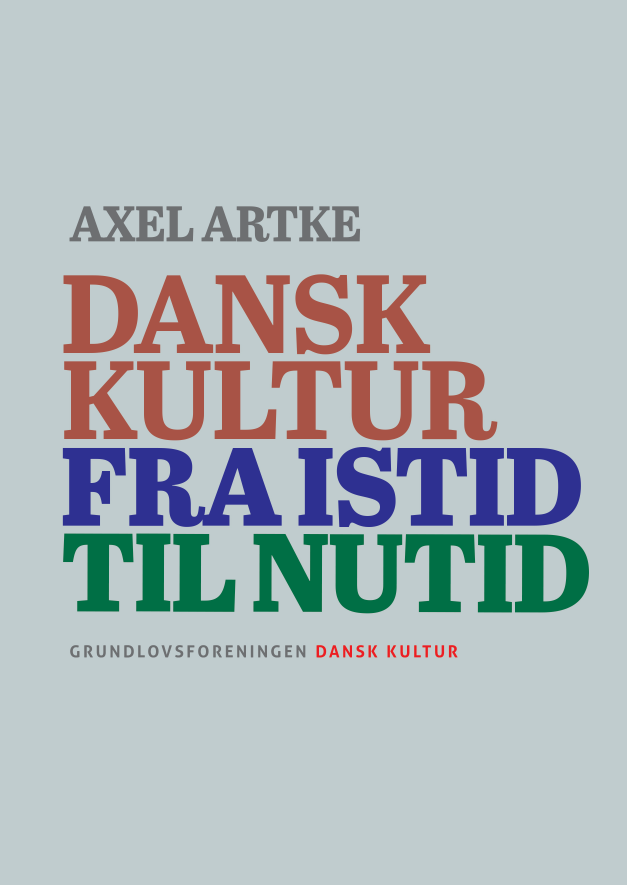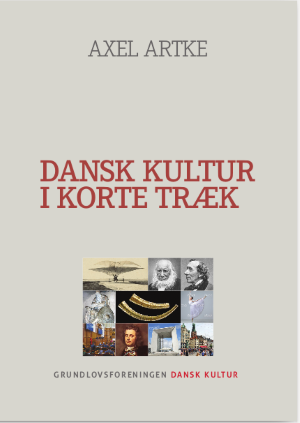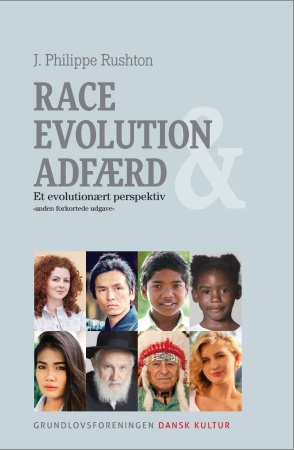norske journalister altså. Tænk engang ! Svenske er mere driftsikre, pædagogiske skrivemaskiner. Deres menneskelighed er mere tvivlsom: Gunnar Sandelins opsigtsvækkende DN Debatt, (som JP´s Thomas Heine troede indvarslede en ny tid) har afstedkommet tre (3) reaktioner. Der kan være et enkelt læserbrev, men da det ikke er nogen populær genre i svenske aviser, tvivler jeg.
Journalister vier livet sitt til å avdekke rasisme og andre kritikkverdige forhold i samfunnet. Finnes det rasistiske holdninger blant disse nyhetsjournalistene?
Omfanget av fremmedfiendtlige holdninger blant journalister er større enn tidligere antatt.
Det kommer frem i en undersøkelse, som er gjort på oppdrag fra journalistene selv. I morgen legger Stiftelsen for en Kritisk og Undersøkende Presse (SKUP) den frem foran mer enn 600 norske journalister på den årlige SKUP-konferansen i Tønsberg.
Blant de over 1000 som svarte på undersøkelsen, var 25 prosent enige i påstanden “I løpet av det siste halvåret, har jeg hørt kolleger ytre seg fremmedfiendtlig/rasistisk”. [..]
Den andre journalist svarte “hadde Quisling levd nå ville han ha utnyttet innvandrernes dumheter maksimalt, og laget et mye større helvete enn hva Hege Storhaug og andre klarer”.
«Jeg skjønner bare ikke hvorfor disse muslimene skal være så jævla muslimske hele tiden. Kan de ikke bare leve som vanlige folk?»
– Samtidig er det vel ikke noe hemmelighet at journalister er mennesker de også, og derfor ikke skjermet fra holdninger man kan finne blant resten av befolkningen, legger han til. Journalister har rasistiske holdninger
Dr. Wafa Sultan in Hiding
Dr. Wafa Sultan has been forced to go into hiding with her family following a fatwa (religious edict) from an Islamic scholar, according to Omedia. Sultan faces the fatwa following a recent debate on Al-Jazeera in which she challenged Egyptian Islamist Talat Rheim over Dutch cartoons of Mohammed, who Muslims revere as a prophet. Sultan argued that Denmark had the right to print the cartoons.
Sultan joins a growing list of public critics of radical Islam facing death threats. Her supporters have asked the American public to join them in writing to the embassy of Qatar, the country which sponsors Al-Jazeera, as well as to United States President George Bush and Secretary of State Condoleezza Rice, asking them to defend Sultan’s right to free speech and personal safety.Wafa Sultan Counterattack: Sheikh Yusuf al-Qaradawi Responds
Israelnationalnews og Robert Spencer : Wafa Sultan – Target of Jihad
“Flere parallelsamfund eller helhjertet integration ?”
citat en af Helle Thornings ni teser (der alle lyder som om de er spyttet ud fra et dyrt reklamebureau, men barberet for branchens værste Karl Smart-klicheer, ned til rene abstraktioner. ) – det lyder jo som om vi har et enkelt valg, som om vi stadig kan vælge at gøre SR regeringes masseindvandring til en succes, hvis vi bare vil. Har vi det valg ? En skræmmende tysk undersøgelse bekræfter ikke, at det forholder sig sådan. Den signalerer strid eller underkastelse.
Results of the Study Muslims in Germany A Summary
A Study Conducted by the Federal Ministry of the Interior On:Integration, Barriers to Integration, Religion and Attitudes Toward Democracy, the Constitutional State, and Politically and Religiously Motivated Violence
Results
One first important result even if it is not a surprising one when seen against the background of earlier studies was that the majority of Muslims in Germany attaches great importance to its religion in theory and practice. The findings of several studies on the practice of religion show further that Islam exhibits an effectiveness in manifold forms that penetrates deeply into the daily life of Muslims and presents a powerful force for the shaping of daily life as well as for the structuring of social relationships (21).
In contrast to earlier surveys, it is clear that the number of those who describe themselves as religious or even very religious has risen again in the last years. Over 85% of the Muslims in Germany describe themselves as religious or very religious (138). The number of those who attend mosque at least once a week increased between 2000 and 2005 from 30.7% to 41.6% (22). Fundamentalist political tendencies can be attributed only to a minority; the majority has a traditional, an orthodox, or a fundamentalist orientation in regard to religion (140).
Not only the attendees at mosque has increased, but also, for example, the number of those advocating the wearing of the headscarf for women: in 2005, 46.6% agreed with the statement that women should wear a headscarf in public, while in 2000 only 27.2% had affirmed this (23). And the number of those who have attended a Koran school also is clearly higher among the younger Muslims in Germany than among those who are older (112). Interestingly, the number is highest among those born in Germany: 60%. The longer that attendance at a Koran school lasted, the more clearly a religiously fundamentalist orientation can be observed (134) which likewise cannot be surprising when seen against the background of the results of earlier studies on the integration-inhibiting role played by Koran schools.2
The study explicitly and rightly emphasizes that a religiously orthodox, old-fashioned traditional, or fundamentalist orientation may not be equated rashly with the willingness to commit violence or with extremism. Islam does not in any way teach terrorism as a goal of faith, and whoever prays five times a day is in no way closer to violence and extremism than the non-religious person. Whoever adheres to religious rites and convictions in a, to a large extent, secular society may appear suspicious to some but, by no stretch of the imagination can he or she be termed a terrorist on this basis. In order to slide from a strict religious belief into extremism, further motivating elements, attitudes, and developments (most Muslims would say: wrong developments) are necessary so that, in the end, a person believing in Islam becomes an advocate of struggle and violence against the infidels. In this area, too, that is, in the explanation of the necessary differences between a believer and an extremist, the study makes a valuable contribution.
1.The Muslim Resident Population
The answers from about 1000 persons were analyzed after a telephone survey; not quite a third possessed German citizenship (192). But, only 12.2% defined themselves as Germans (193). The average educational level of those surveyed was rather low: almost 70% possessed a secondary school diploma or less; but only about 12% were academics (192, 193).
Integration
Of the respondents, 19.4% can be considered as poorly integrated linguistically and socially, a further 37.6% as moderately integrated, only 32% as satisfactorily to well integrated, and 11.9% as very well integrated (96), dependent upon the age of the person at the time of immigration: A successful integration, put into practice in everyday life, can be identified only in somewhat more than 10% (103) in this clarity, a conclusion that must give pause for serious thought and call for nothing short of political action. To be sure, segregation and isolation are rejected by the overwhelming majority of over 80%, but the neglect of ones own culture is likewise also rejected (99). The willingness to integrate, of course, exists, but it goes hand in hand with the necessity for retaining ones own culture. Nearly half of the Muslim resident population, for its part, feels rejected by the German population (109).
Disparagement and the Readiness to Resort to Violence
Almost 90% are infuriated when after terrorist attacks Muslims are always suspected first (108); they feel themselves as Muslims collectively and globally marginalized. More than 90% reject the killing of other people in the name of God as unjustifiable, and more than 90% consider a person who encourages young Muslims to commit suicide attacks or instructs them in doing so to be godless criminals (177). On the other hand, 44% agreed somewhat or completely with the statement that Muslims who die in armed struggle for the faith enter into Paradise, that is, are rewarded by God for their acts (176). Just under 40% consider the use of physical violence as a reaction to the threat presented to Islam by the West as legitimate (191).
Religion and Religious Freedom
Almost 87% characterize themselves as personally religious or very religious, whereby the level of devotion increases at a lower level of schooling (112). About 40% of the Muslim resident population can be considered as fundamentalist oriented (195): 79.6% agreed completely with the statement that the Koran is the true revelation of God; a further 9.4% agreed somewhat; together 89% (116). The daily regard for religion also goes hand in hand with the high proportion of those who are convinced of the truth of their religion; the rites and commandments of Islam are held in high esteem, even when they are not always observed in detail (117).
Although it is evident in this segment of the population, as well as also in all others, how highly religious freedom is esteemed in Germany, around 30% agree completely or somewhat that it should be forbidden to persuade Muslims to change their religion (118) which would mean a restriction upon the public presentation of other religions and, thus, a restriction upon religious freedom. Forty-five percent agreed completely or somewhat that only Islam is able to solve the problems of out time (119). Further, 48.4% affirm the statement that democracy in Germany is one of the reasons for the high rate of crime (141); 46.7% agree somewhat or completely that the observance of the commandments of my religion … (is) more important for me than democracy (141), which corresponds roughly to the results of earlier surveys that about half of the Muslim population in Germany considers the Koran and democracy to be incompatible. Further, 33.6% advocate the death penalty, and about 9.4% advocate the punishments contained in Sharia for Germany (141) which in absolute figures corresponds to more than 300,000 people.
Radicalisms
With attendance at a Koran school, the consumption (exclusively) of non-German media, as well as the exclusive participation in Islamic associations, the distance to democracy and the distance to the rule of law increase considerably (167, 173), a development which is discernible among about 10% of Muslims as a whole and is the higher the less the linguistic-practical integration has been successful (173). The distance to democracy is greatest among the extremely religious (fundamentalist oriented), but in this group applies only to a hard core of about 15% (173).
Especially susceptible to radicalisms appears, first of all, to be especially well-educated groups that, to be sure, themselves have had little experience of discrimination in Germany, but assume such for the Muslims globally. The second group of those in danger of radicalization is composed of people with little education and an active experience of discrimination; the third group includes people with a traditional religious orientation In consequence, it can be said that an individuals lack of participation in society, or that persons marginalization, is certainly a problem, but for only a part of Muslims is it a cause for a possible radicalization (166).
Adding the group of those maintaining a great distance to democracy to those who to a great degree consider religiously and politically motivated violence to be legitimate, the study assumes a proportion amounting altogether to 13.9% of the Muslims in Germany (185), an absolutely substantial minority with a problematic attitude toward violence and/or democracy and the rule of law (185) that shows a clear potential for radicalization. Only a small minority of 6% displays a high acceptance of politically and religiously motivated violence (190).
A sound education is thus a factor that makes a development toward radicalization more unlikely, but does not exclude it, which is shown by the group of those with a higher level of education but with a stronger rejection of the Western way of life and the Western social order for this reason, it is correct to emphasize the significance of education since, in the segment with a greater level of education, a smaller proportion approves of religiously and politically motivated violence, but, on the other hand, it is shown empirically here that radicalism is not to be combated with education alone, since a portion of educated persons also is found among those who advocate politically and religiously motivated violence.
On the whole, the results of this survey lead to the conclusion that, in the Muslim resident population, a relevant potential on the level of personal attitudes exists that can be suitable as a ground of resonance and a field of recruitment for radicalisms and extremisms (201).
2. Students of the Ninth and Tenth Grades
About 500 Muslim youth from various types of schools in Cologne, Augsburg, and Hamburg were surveyed by written questionnaire together with non-Muslim youth so that a comparison could be drawn between the various educational segments, but also between Muslim and non-Muslim migrants as well as native non-Muslims.
Just about 40% of the Muslim students surveyed possessed German citizenship (212); about 70% came from a Turkish background (213); 77% lived since birth in Germany (214). Yet, here, too, a high proportion, 27.2%, felt themselves bound only to their home country (219), which for most of them is the country of origin of their parents and grandparents. Definite tendencies toward segregation from the majority society are discernible in a third of the young people (265). Just over 10% express themselves affirmatively in regard to the legitimacy of corporal punishment in Germany also (267), 14.2% are assessed as critical of democracy (272), while, in comparison, 10.5% of German non-Muslims hold the same view (337).
Radicalisms
More than 15% of Muslim young people express anti-Semitic prejudices (275); to a clearly lesser extent, however, prejudices against Christians. Among native non-Muslims, however, the proportion of those who express prejudices against Muslims is, at almost a fifth of those surveyed, still higher. Only 6.4% of Muslim youth is considered to be sympathetic toward Islamism (295), but 24% are considered sympathetic toward violence (310) in contrast to 14.9% of native youth: In sum, it therefore can be established that a significantly heightened acceptance of violence is connected with the affiliation with the Islamic religion (312). Among non-Muslims (Christians), a contrary tendency is discernible: a heightened religious consciousness lowers the affinity toward violence to about 3% (315, 319).
Intolerance and Dissociation From Democracy
A great distance from democracy and the rule of law is evinced by 11.6% (306). If strong anti-Semitic or antichristian prejudices and/or great distance from democracy are taken together as characteristics that define a group at risk, then, on the basis of the data in hand, one can discern such problems for almost a quarter of young Muslims (23.8%). It is a matter here of a minority that is not to be underestimated and that shows clear indications of intolerance, distance to democracy, or authoritarian features (308). If the aspect of the advocacy of violence is combined with this figure, then the percentage rises to 29.2% (341), more than a quarter of Muslim young people a potential that is not insignificant and is not to be neglected.
Whoever maintains his or her distance to democracy, entertains religious prejudices, and is intolerant tends rather to advocate violence (339). Approximately a fourth of the young people affirms its own readiness to exert corporal violence against unbelievers in the service of the Islamic community (339). As a whole, this percentage of young people is approximately twice as high as the percentage in the total Islamic population; among the young people, the potential of young Muslims responsive to political radicalization up to the extent of excessive violence (is) noticeably higher than in the general population (321), especially among poorly educated young men with experience of discrimination and a fundamentalist religious orientation (327). A religious orientation alone, or poor social conditions, or the lack of educational opportunities, however, are in no way responsible for the advocacy of violence. Parental experiences with violence, the traditional perception of roles, and notions of masculinity play a greater role here (330).
The Significance of Religion
The percentage of young people who characterize themselves as religious is 87.2% (this percentage is somewhat higher than in the general population). Of these, 44.2% can be characterized as fundamentalist oriented, for whom religion is of great significance in daily life and who emphasize a faithful, rigid observance of the Koranic commandments (262). In contrast, 45.6% of non-Muslim migrants describe themselves as religious; only 19.1% of native young people do so (242). Among Muslim youth, this heightened religiousness is a concomitant of less education and a correlative longer attendance at a Koran school, the result of which is a more intense fundamentalist orientation. Among native young people, an increased religiousness is, conversely, a concomitant of a higher education (246, 262).
Education and Exclusion
Striking is the fact that the educational level of Muslim youth (rate of attendance at a Gymnasium: 14.6%) is significantly lower than among native young people (45.8%), but also lower than among non-Muslim migrants (34.1%). Among Muslims, 63.3% reported that they had only a few or no German friends at all; among non-Muslim migrants, this was the case for only 47.1% (220).
The linguistic-practical integration of Muslim youth was significantly less than that of non-Muslim youth; more than 40% have problems here (223, 224). Only 45.4% of young Muslims advocate the adaptation of their conduct to German culture and instead demand acceptance; in the general Muslim population, on the other hand, 82.6% advocates adaptation (225). In consequence, young Muslims insist more strongly than non-Muslims upon the maintenance of their own culture. At the same time, however, 35.9% judges the German society receiving them as migrants as having a negative attitude toward them; almost 80% report of incidents of rejection and negative treatment in the last twelve months (241).
Apart from the clearly discernible distance maintained by many Muslim young people toward German society is the fact that between 14.3% and 19.5% of native youth display extremely xenophobic attitudes. The claim of a fundamental superiority of Germans over other peoples is agreed to somewhat or completely by 15.3% (231); 43.4% have the opinion that most foreigners are criminals (231). Among native German youth, 17.1% encounter Muslims with intolerance and prejudice, and advocate violence (233); almost 50% support the idea that foreigners who are unable or unwilling to accommodate themselves should leave Germany (235) here lies a considerable potential for conflict.
3. University Students
From a survey of a total of more than 1000 university students in Hamburg, Augsburg, and Cologne, as well as the Charité in Berlin, just under 200 Muslim university students were extracted as a third group for analysis. The overwhelming majority of the Muslims surveyed here, too, came from a Turkish background; all those surveyed had studied for at last six semesters.
Among the students, too, the culture of origin and the relationship and commitment to ones own roots played a large role, for in this segment of the population, too, it is emphasized among more than half of the students that the maintenance of ones native culture, in spite of the likewise extant willingness to accommodate, is at the same time important (417). Only 10% express a primary cultural identification with Germany (363). From this, it can be concluded that the question of commitment to and identification with the receiving society is not one of education. Those who are best integrated can be seen as those who came to Germany already as children or young people (357). On the whole, the rate of those who linguistically and socially are well or very well integrated among the students is 78.9% (358).
Discriminations
Remarkable is the high percentage of Muslim students who mention rejection and discrimination: More than 60% of Muslim students declare that, as foreigners, they already have been given funny looks; only a little more than 40% of non-Muslims report this. More than 50% of Muslim students also cite discrimination from the police or administrative agencies, which they attribute to the fact that they are foreigners, while only about a third of non-Muslims see this so (365). Among Muslim students, 33.7% report severe or very severe discrimination, a rate that is considerably lower among non-Muslim students. Here, thus, it is obvious that certain incidents are interpreted by Muslims differently than by non-Muslims, which can be substantiated clearly through the high rate of agreement with a globally-felt marginalization of Muslims.
Here, one can recognize a clear connection between linguistic-practical integration and the magnitude of personally-felt slights the experience of victimization (367). Among Muslim students, 43.2% feel rejected by the German population (369), and almost 83% personally feel rage in response to the immediate suspicion of Muslims in regard to terror attacks (371), which means a broad dissemination of the perception of collective marginalization.
Religion and Democracy
Religion has great importance among students, also. Of them, 76.7% describe themselves as religious; of these, just under 20% are very religious (373). More than two thirds consider the Koran to be the true revelation of God (377). Here, too, religious orthodoxy or traditionalism is not to be equated with extremism or the readiness to resort to violence (402).
In comparison with the general resident population, the proportion of the fundamentalist oriented who, in correlation, show considerably lower levels of integration as well as report higher rates of personally-experienced discrimination (388) is above all considerably lower among students, and the proportion of the moderately religious, at just under 35%, is relatively higher (383). Nevertheless, 17.8% state that the religious commandments in the Koran would have greater importance to them than democracy, and about a third expressed themselves positively in a general way in regard to Sharia in Germany, while, however, only 7% expressed unequivocal agreement (389). On the whole, 8.2% within the group of students are classed as highly distant toward democracy (390), and 9.4% express anti-Semitic prejudices (non-Muslims with a migration background: 4.9%) (394). The tendency toward authoritarian-Islamist, anti-Semitic, antichristian, and democracy-distant attitudes among Muslim students is, at 14.9%, on the whole definitely less than among high school students (23.8%) (403), but is still a significant minority.
Along with the approximately 6% of students with a sympathy for Islamism, there exists a further quarter of students who are rigidly religious and declare a moderate distance to democracy combined with a general affirmation of Sharia. Here, the willingness to accommodate can be termed rather low, and the tendencies toward isolation are rather strong, so that here, against the background of a strong perception of the marginalization of the Muslim community and concretely experienced discrimination, the ground for radicalization can be prepared easily (404). This critical potential among the students who are subject to a latent danger of radicalization is estimated by the authors of the study to be of the magnitude of roughly 30% when the advocacy of Sharia, a distance to democracy, religious prejudices, and a rigid alignment on religion are included as compromising factors (404, 405).
Religiously and politically motivated violence is also cited much less frequently by the students than on average in the Muslim population and is rejected by more than 80%. On the whole, Muslim and non-Muslim students do not differ from each other significantly (415). In general, it appears that it is the globally marginalized and oppressed position of Muslims observed in foreign countries worldwide that comes into question as a factor for possible radicalization rather than the personal experience of discrimination in Germany (416).
Thus, also among the highly educated Muslims, as which students here must be regarded, a high-risk group quite definitely can be more exactly located. Significant here along with a religious alignment in a form that bears in itself a strong devaluation of the West and a wholesale upgrading of the value of Islam is the intensive confrontation with the position of Muslims in the world and the subjective perception of their discrimination and oppression. (420)
(420)
4. Activists in Islamic Associations and Organizations
As a fourth group, functionaries or activists in Islamic associations, mosques, and organizations, as well their members, users, and those persons from their immediate environment closely connected with them, were surveyed. Altogether, 60 male Muslims academics as well as non-academics between the ages of 25 and 55 in the Hamburg area were surveyed in personal interviews. In carrying out the interviews, a considerable effort was necessary in order to dispel the misgivings of those interviewed about a possible eavesdropping or infiltration of the associations, or also about the collection of data about persons in the associations for use by the security agencies.
Here, too, the interview partners with a Turkish background were in the majority; more than half the interview partners held German citizenship. The participants in the interviews were without exception very religious (456); a portion expressed a strong deprecation of Western societies (459), which were judged as morally depraved and two-faced (466). The themes of global marginalization and oppression of Muslims assumes an immensely important role in these interviews (486).
Exclusion
The esteem for freedom and basic rights, such as the freedom of religion and the rule of law in Germany, were emphasized frequently. At the same time, all those interviewed remarked that they, as Muslims, felt excluded and discriminated against in Germany and felt a strong solidarity with the worldwide situation of Muslims, which they characterized very emphatically as victims. Those interviewed complained that Islam in Germany is discriminated against in comparison with Christianity, that is, that Islam is not treated as a religion of equal status, so that Muslims in the workplace are limited in the practice of their religion whereby this state of affairs always was reported as applying to others, but no impediment, for example, to prayer, was cited from personal experience (443, 444). As evidence that Islam is discriminated against, limitations in the construction of mosques were cited. State sponsorship and support of the construction of mosques, on the other hand, would be acknowledged as a symbol of the equal recognition of Muslims in society (445).
Striking were the frequently exaggerated reports about a climate of prejudices, hostilities, rejection, and discriminations against Muslims in Germany: The descriptions are to a great extent interspersed with the locution of Muslims as victims expressed with the most varied nuances … To be sure, this is substantiated to a certain extent with references to details, which, however, in very few cases are attributed to direct personal experience. Dominant is the description of the situation of others who one personally knows and about which one knows (441) or descriptions that show a strong distortion of the truth: I am treated here and looked upon as though I am a terrorist (as though one is a constant threat) only because I come to prayer (484). Only through the supposed treatment of Muslims as terrorists in Germany, so the respondents, does aggression among Muslims arise: There is such an effort to discriminate [against Muslim women], that almost nothing any more can be done with a headscarf … thus, one becomes aggressive (484) here, the German society, because of its exclusion of Muslims, is considered the cause of violence.
Integration
In reaction, older persons appear rather to withdraw from German society, while younger persons, as self-assured Muslims in Germany, demand that they be given recognition (489), and have the vision of forming a kind of political or even economic avant-garde. It is strongly emphasized by several, especially younger interview partners that the Muslim community expects to be recognized by the receiving society just as they are (485). Integration is considered to be a two-sided process and also as a debt to be paid by the majority society: 91.6% of those surveyed advocate free German courses for migrants (448). Up to the present, the feeling of not really belonging has been dominant, even if German citizenship was acquired (450). Coldness, distance, and isolation are mentioned frequently as characteristics of German society, which, so the respondents, when all is said and done, would not acknowledge the migrants as their own whatever the migrants might be willing to do and would demand assimilation (485). On the other hand, the personal places of refuge, the mosque associations, and cultural organizations are named critically by a portion of those surveyed as an obstacle to integration (454).
Extremism and Personal Liberties
A striking feature of the interviews was the frequently expressed complaint about the constantly demanded separation and dissociation from hate preachers and extremists. Muslim associations and mosques have developed a distinct feeling … of being increasingly in the focus of observation and always being exposed to the danger of being placed under the suspicion of Islamism and of struggling against democratic structures (426). In the interviews, the opinion also was expressed that through its rejection of Muslims, German society hinders their integration, reception into the society, and complete cultural acceptance (478).
In the course of the survey, an ambivalent relationship to personal liberties in Germany frequently came to light: on the one hand, a resort to personal liberties for the purpose of asserting ones own point of view (for example, the assertion of religious instruction in ones own religious orientation as the only correct one), which at the same time is then rejected when positions deviating from ones own views are at issue (for example, religious instruction in other Muslim branches of faith) (480), or in the case of marriage with non-Muslim partners: for sons barely accepted, but for daughters apodictically rejected (481). Here, the expectation that the German state should introduce special rights for Muslims also is formulated, as, for example, state promotion of and respect for Islamic holidays or the application of Islamic law for the Islamic faith community through the creation of a parallel legal society (481) here, the rule of law as the principle of legal sovereignty applying equally to the Muslim faith community is clearly rejected. About one of the interview partners, it is said that An accommodation of his conduct, or the conduct of other Muslims, to the rules of the receiving German society is, in his eyes, an unacceptable imposition (482)
The existence of hate preachers and mosques in which extremism is preached is conceded, but is judged critically as far as is possible. They are considered as a problem and as doing harm to Muslims as a whole (462). The reaction of German society to the extremist threat, however, is judged at the same time as discriminatory, exaggerated, and, in the last analysis for example, through identity checks in or before mosques as aggravating the threat (468). Muslims, it is believed, are construed falsely by politics internationally as a threatening factor (473), whereby a third of those surveyed considers the concern with extremism as out of place, a third as justified but highly exaggerated in individual perception, and a third as justified.
Religiously and politically motivated violence is almost never openly promoted or approved. On the other hand, a radicalization through a many times greater distance to democracy, clear tendencies toward isolation, the often affirmed judgement of the Sharia as superior to the Basic Law, the in part openly conceded dissociation from the rule of law, and the demand for the limitation of the personal liberties of others (such as ones own daughters or wife) appears easily conceivable in this environment.
Finally, with the help of four individual biographical reports, it becomes clear how processes of radicalization can come to pass in Germany:
One cause can be a kind of awakening experience through which earlier religious training is revived in a period in which there is a lack of orientation and deep uncertainty and in which Islam is now implemented in a comprehensive and rigid manner.
Another way is the gradual entry into a tradition of true Islam or of a stricter religious observance than usual in the parents home. This occurs frequently in a mosque or learning environment in which separation and the superiority of the Sharia over Western values are preached. After this change in the previously average religious person, a significantly heightened degree of religious rigidity and depreciation of other Muslims who do not live consistently according to the rules of Islam is reached that then quickly extends to complete dissociation from Western society and the acceptance of violence in defence of religion or honor, as well as to the limitation of personal liberties (for example, among the women in ones own family) or to the struggle against unbelief (471). If religious intolerance and strict orientation on rules combines with distance to democracy and subjection to the authority of religious leaders who demand a rigid and also a political implementation of Islam, then processes of radicalization can begin that end in the turn to Islamism and in the willingness to use violence (477).
Summary
In the sum of the study, the great significance of religion for all Muslims in Germany is striking, as well as the high percentage of those who confess their religion in theory and practice. Fundamentalist religious orientations, however, are not synonymous with distance to democracy, and distance to democracy is not automatically a sign of the willingness to commit violence; other factors must be added here. It is, however, certainly the case that the seed of radicalism can be sown more easily in this ground of the basically aloof view of the Western way of life and society, a view that can change into extremism against the background of personally experienced marginalization or the sense of the worldwide oppression of Muslims. For this reason, the potential for danger is considerably greater than the modest membership figures in the known Islamic-extremist associations might suggest.
Because of the manifold factors that can bring about a radicalization of individuals, this latent potential for a politically and religiously motivated radicalization in Germany, as the study emphasizes, can not be quantified clearly. The authors, however, on the basis of the present investigation, assume a figure of approximately 10% to 12% of the Muslims in Germany (494), which means a number on the magnitude of between 320,000 and 420,000 people.
Decisive for radicalization are, essentially, three different paths: For the first path, the experience of a personal exclusion is less decisive than the vicarious sense of being the victim of a global oppression and of finding ones system of reference outside Western society (in Sharia or in the umma, the Muslim world community), the notion of an exclusion, deprecation, and oppression of Muslims on a national as well as international level (494), for In sum, a quite considerable portion of the Muslims living in Germany, students as well as the general Muslim population, is convinced that the community of Muslims in the global sense is discriminated against and treated poorly (418).
The second group is basically willing to accommodate, but experiences personal rejection while at the same time having few chances for participation in society because of a low level of education. The third group is rather traditional in its religious orientation and of itself withdraws from society without wanting to participate (494).
The potential for an affinity to violence among Muslims in Germany can be quantified as just under 6%. If a great distance to democracy and a rejection of the rule of law are added, then a figure of about 14% of the Muslims within the survey is reached. By projection of this result upon the entire Muslim population in Germany, and in consideration of possible sources of error, this percentage can lie between 11.9% and 16.4% (495). The study concludes:
Fundamentalist orientations that combine a close religious attachment, a high relevance of religion in daily life, and a strong orientation on religious rules and rituals with a tendency to exclude Muslims who do not observe these, as well as with the tendency generally to heighten the value of Islam and to derogate Western, Christian-influenced cultures, show an enormous dissemination. In the general population, about 40% are to be assigned to such a pattern of orientation (493)
Language acquisition and education, as well as social participation and the reduction of prejudices, especially those prejudices held by non-Muslim youth toward Muslims, are thus important social and political goals necessary for counteracting tendencies toward radicalization in the Muslim community. However, they do not form the one, comprehensive solution, since there are other elements in the process of radicalization such as the perceived worldwide victimization of Muslims, or a political and rigid instruction in Islam through a religious authority. In any case, a fundamental potential for recruitment is found among Muslim youth and young adults, and not among those who are older (501). For this reason, it is important to the authors of the study that the dialogue be conducted openly, but not indifferently.
It seems to be the case that this search for meaning and the struggle for values requires a dialogue and credible dialogue partners who, on the one hand, do not dismiss Islam, and also do not encounter it with an arbitrary attitude, but rather themselves are strong dialogue partners standing upon a solid foundation (501)
Institute of Islamic Studies of the German Evangelical Alliance e.V.
Postfach 7427, D-53074 Bonn
1 The study can be ordered at no cost from: Publikationsversand der Bundesregierung, Postfach 48 10 09, 18132 Rostock; a download of the complete study, as well as a shortened version (36 p.), is available under www.bmi.bund.de
2 Wolfgang Ritsch, for example, came to this result as early as 1987: Die Rolle des Islams für die Koranschulerziehung in der Bundesrepublik Deutschland, Hochschulschriften 244, (Cologne: Pahl-Rugenstein, 1987).











[…] http://snaphanen.dk/2008/04/12/dr-wafa-sultan-in-hiding/Dr. Wafa Sultan has been forced to go into hiding with her family following a fatwa (religious edict) from an Islamic scholar, according to Omedia. Sultan faces the fatwa following a recent debate on Al-Jazeera in which she challenged … […]
[…] http://snaphanen.dk/2008/04/12/dr-wafa-sultan-in-hiding/Dr. Wafa Sultan has been forced to go into hiding with her family following a fatwa (religious edict) from an Islamic scholar, according to Omedia. Sultan faces the fatwa following a recent debate on Al-Jazeera in which she challenged … […]